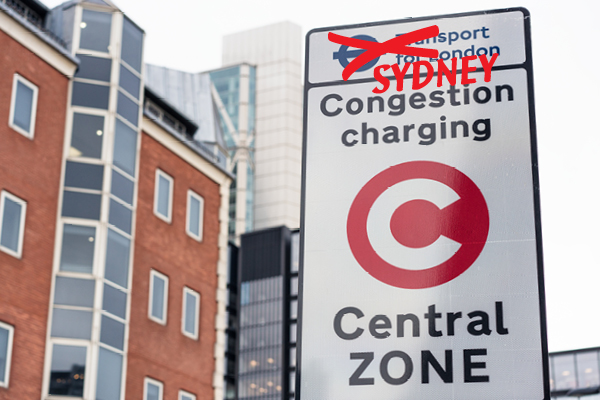As school returns in NSW, so does increased traffic congestion of our peak hour commutes.
Sitting in a slow moving car, it’s hard not to think about the time and money it’s costing you. We recently highlighted the fact that congestion impacts not only the individual costs for things like fuel, but also the entire economy. Currently, congestion costs Sydney, the Hunter and the Illawarra $8 billion annually.
In her research paper, Marion Terrill recently discussed charging for congestion in Australia, like many other major cities do, like Singapore, London, and Stockholm.

The Queuing Method
Currently, we are using the queuing method to tackle congestion in our country. That is, the road is free for anyone to use however they must wait i.e. cross intersections, traffic lights. Yet, Terrill questions whether this is the best solution.
Current ‘Solutions’
In NSW, we have seen the Government try many ways to tackle congestion. This includes building more roadways, expanding the public transport system, and building a handful of active transport corridors.
However, the same cycle happens with all three “solutions”. As the roadway congestion reduces more capacity becomes available for cars due to:
a) more traffic lanes
b) people using the new public transport system
c) people using the new active transport network.
Drivers taking advantage of reduced congestion then choose to travel by car. On roads without tolls these additional trips can absorb up to 50% of the new road capacity.
Brent Todarian and the ABC explain induced demand - the concept that we get more of what we build for. Private motor vehicles take up the most road space, especially if they have only one occupant. We need a new approach to tackling congestion.
Congestion Charging
Implementing congestion charging zones will be challenging as most roads are currently free to access.
Terrill explains that congestion charging could be an effective solution in Australia, particularly in Sydney and Melbourne.
Firstly, charging acts as a way to ration roadways. People start rethinking whether trips are needed, or if there is another cheaper alternative i.e. public or active transport. Unlike providing more capacity on the roads, charging does not encourage people to delay their journey to when the road is less busy, as the charge is still there, no matter the time.
Secondly, introducing a congestion charge is cheaper to implement than building additional roadways or developing a new public transport system. The money saved, plus the revenue raised from charging, can be used to fund transport alternatives like active/public transport, or to reduce taxes.
Thirdly, Terrill suggests that over time people will start evaluating where they live, in relation to how far they need to travel for work, play and other activities. Ultimately this could encourage a more compact city to discourage urban sprawl.
Terrill realises there would be winners and losers with this situation however tackling congestion is not easy.
London’s Congestion Charging - what was the outcome?
London introduced congestion charging in 2003. Within 1 year, there had been a 30% decrease in congestion and overall traffic fell by 16% within the zone.
1.3% of Greater London is designated a congestion charging zone, from 7:00AM to 6:30PM Monday to Friday (excluding public holidays). This reduces economic impacts on theatres, concert halls and music venues, and encourages businesses to schedule deliveries outside peak times.
Bicycle usage increased 31% during this time.
Additionally time waited by bus users, decreased by 33% during this time as well.
“With Sydney's population continually growing, we need to look at other solutions to keep our city moving. Bike riding offers a healthy, low carbon way of fighting congestion, however we know this is only part of the solution to a complex problem,” commented
Bicycle NSW encourages the NSW Government to start looking at cost effective and environmentally friendly options to tackle congestion in our state.
